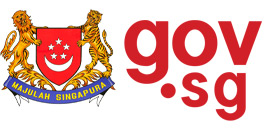
Changes to the PSLE scoring and Secondary One (S1) posting systems will take effect from 2021. Under the new PSLE scoring system, students will receive their PSLE Scores in Achievement Levels (ALs) instead of T-scores.
To better understand these changes, here are five key things you should know:
1. The AL scoring system aims to reduce fine differentiation in PSLE results
Previously, the T-score system differentiated students’ examination results very finely with more than 200 possible aggregates. Under the new PSLE system, T-scores will be replaced with wider scoring bands, known as ALs. A student’s PSLE Score will be the sum of the four AL scores of all the subjects taken and there are now only 29 possible PSLE Scores, ranging from 4 to 32.
While the old T-score system showed how students performed relative to their peers, the new AL system will reflect their individual levels of achievement, regardless of how their peers have done.
2. AL bands are designed to reflect students’ level of understanding and mastery of a subject
| AL | Reference Raw Mark Range |
| 1 | ≥ 90 |
| 2 | 85-89 |
| 3 | 80-84 |
| 4 | 75-79 |
| 5 | 65-74 |
| 6 | 45-64 |
| 7 | 20-44 |
| 8 | < 20 |
Under the new AL system, each subject is graded with one of the eight ALs, which are designed to reflect students’ stages of mastery of the subjects and readiness for their next stage of study in secondary school.
The upper score ranges (AL 1-4) are narrower than the middle to lower score ranges (AL 5-8) as around half of the students taking standard subjects today score in the range of 75 and above. If these bands are further widened, it will lead to too many students with the same PSLE score, which will require more tie-breaking to determine secondary school postings.
At the middle to lower AL bands, wider mark ranges are sufficient to give a good indication of a students’ progress and readiness for the next course of study.
3. There is no pass or fail grade for each PSLE subject, or the PSLE as a whole
The PSLE is a placement exam to guide students to take subjects in secondary school at levels that best suit them at the point of entry to secondary school. A student who obtains a PSLE Score of 26 to 30, and scores an AL 7 or better in both English Language and Mathematics – or AL B or better at Foundation level for these subjects – can progress to the Normal (Technical) course in secondary school.
4. Parents and students should look beyond the schools’ Cut-Off Points (COPs) when choosing a secondary school
Parents and students are encouraged to look beyond the schools’ COPs when choosing a secondary school. Other factors to consider include the student’s learning needs, interests and strengths, as well as the culture, environment, distinctive programmes and CCAs of the schools. These can help them better shortlist schools that will best fit the needs of each student.
| Parents may leverage resources, such as school websites or MOE’s platforms (i.e. PSLE-FSBB microsite and MOE’s SchoolFinder) to guide them in their decision of choosing the best secondary schools for their child. |
5. Majority of students will not need to go through balloting under the new S1 posting system
Posting to secondary school will continue to be based on academic merit.
Tie-breakers will only be used if there is more than one student with the same score vying for the last available place in a school.
The first tiebreaker is citizenship, which is an existing tiebreaker. If two students with the same PSLE Score are vying for the last remaining place in a school they both choose, a Singapore Citizen will be admitted ahead of a Singapore Permanent Resident, and a Singapore Permanent Resident will be admitted ahead of an International Student.
The next tiebreaker is choice order. If two students with the same PSLE Score and citizenship status are vying for the last remaining place in a school, the student who ranked the school higher will be considered first.
Lastly, if citizenship status and school choice order are the same, a computerised ballot will be used.
This means that balloting only happens when two conditions are met at the same time:
- When there are more students who choose the same school than there are vacancies in that school, and
- When there are students at the margins of admission to the same school who have the same PSLE Score, citizenship and choice order of schools.
For more information on the changes to the PSLE scoring and S1 posting systems, visit the PSLE-FSBB microsite.
We use cookies to tailor your browsing experience. By continuing to use Gov.sg, you accept our use of cookies. To decline cookies at any time, you may adjust your browser settings. Find out more about your cookie preferences here .


















